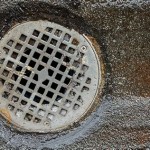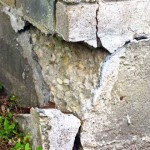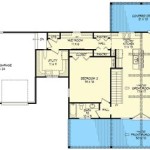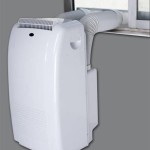Sump Pump Installation for Basement Waterproofing: A Comprehensive Guide
Basement waterproofing is a crucial aspect of home maintenance, especially in regions prone to heavy rainfall or fluctuating water tables. A key component of a robust basement waterproofing strategy is the installation of a sump pump. A sump pump is designed to remove water that accumulates in a sump pit, typically located in the lowest part of the basement. This prevents water from seeping into the basement and causing damage, such as mold growth, structural weakening, and property loss.
This article will comprehensively address the installation of sump pumps as a vital element of basement waterproofing. It will cover the reasons for installation, different types of sump pumps, the installation process itself, and essential maintenance practices.
Why Sump Pump Installation is Essential for Basement Waterproofing
The primary function of a sump pump is to mitigate the risk of water damage in a basement. Water can enter a basement through various pathways, including cracks in the foundation, hydrostatic pressure from the surrounding soil, and poor drainage around the home's perimeter. Without a mechanism to remove this water, it can pool, leading to significant problems.
Hydrostatic pressure is a significant factor. The soil surrounding a foundation can become saturated with water during periods of heavy rain or snowmelt. This saturated soil exerts pressure against the foundation walls and floor. This pressure can force water through even the smallest cracks or imperfections. A sump pump system intercepts this water before it has a chance to enter the living space.
Furthermore, excess moisture in a basement can lead to mold and mildew growth. These organisms thrive in damp environments and can cause respiratory problems, allergic reactions, and other health issues. A sump pump helps maintain a dry environment, thus preventing mold and mildew from flourishing.
In areas with high water tables, the risk of basement flooding is significantly increased. A high water table means that the underground water level is relatively close to the surface. In such areas, water can easily seep into the basement, especially during periods of heavy precipitation. A sump pump is virtually essential for homes in these regions.
Beyond the immediate health and safety concerns, water damage can also severely impact the structural integrity of a home. Prolonged exposure to moisture can weaken the foundation, leading to costly repairs. A sump pump acts as a proactive measure to protect the foundation and prevent these structural issues.
Types of Sump Pumps and Their Suitability
Several types of sump pumps are available, each with its own advantages and disadvantages. The choice of sump pump depends on factors such as the size of the basement, the frequency of water intrusion, and budget considerations. The two main categories are submersible pumps and pedestal pumps.
Submersible Sump Pumps: These pumps are designed to be placed directly in the sump pit and are fully submerged in water. They are typically more powerful and quieter than pedestal pumps. The motor is sealed in a waterproof housing, protecting it from damage. Submersible pumps are generally more efficient at removing water quickly and are less prone to clogging due to debris.
One drawback of submersible pumps is that they can be more expensive than pedestal pumps. They also require more maintenance as they are constantly submerged, and any repairs can be more complex. However, their performance and reliability often outweigh these disadvantages for many homeowners.
Pedestal Sump Pumps: Pedestal pumps are located outside the sump pit, with only a hose extending into the water. The motor is mounted on a pedestal above the pit. Pedestal pumps are generally less expensive and easier to repair than submersible pumps. They are also more visible, making it easier to detect any issues.
However, pedestal pumps are typically noisier and less powerful than submersible pumps. They are also more susceptible to clogging and have a shorter lifespan. Because the motor is exposed, it is also more vulnerable to damage from moisture and humidity. Pedestal pumps are often suitable for situations where water intrusion is infrequent and the budget is a primary concern.
Water-Powered Sump Pumps: These pumps operate using the home's municipal water supply. They do not require electricity, making them reliable during power outages. When water fills the sump pit, the pump uses the water pressure from the municipal water line to remove the collected water. However, they consume a significant amount of water, which can increase water bills. They also depend on the continued availability of municipal water, which may not be guaranteed in all situations.
Battery Backup Sump Pumps: A battery backup sump pump system is not a type of pump in itself, but rather a supplementary system to ensure functionality during power outages. These systems consist of a battery and a separate pump that automatically activates when the primary pump fails due to a power loss. Battery backup systems are crucial for homes that experience frequent power outages or where sump pump failure could lead to significant water damage.
The Sump Pump Installation Process
Proper sump pump installation is crucial for ensuring its effectiveness and longevity. While it is possible for experienced homeowners to install a sump pump themselves, it is often recommended to hire a professional plumber or basement waterproofing specialist. A professional can ensure that the installation is done correctly and that the system is properly sized for the specific needs of the home.
Step 1: Sump Pit Installation (if required): If a sump pit does not already exist, one will need to be created. The pit is typically a cylindrical hole dug in the basement floor, usually near the lowest point. The pit should be deep and wide enough to accommodate the sump pump and allow for proper water collection. Pre-fabricated sump basins are available for purchase and are easy to install. These basins are usually made of plastic or fiberglass and come with a lid to prevent debris from entering the pit.
Step 2: Pump Placement and Connection: Once the pit is prepared, the sump pump is placed inside. For submersible pumps, the entire pump is submerged in the water. For pedestal pumps, only the intake hose is placed in the water. The pump is then connected to a discharge pipe, which will carry the water away from the foundation. The discharge pipe should be at least 1.5 inches in diameter and should be made of rigid PVC pipe. The pipe should slope away from the house to prevent water from flowing back into the sump pit.
Step 3: Discharge Line Installation: The discharge line is crucial for directing water away from the foundation. The line should extend at least 10 feet away from the house and should discharge into an area where the water will not pool or cause erosion. It is also important to ensure that the discharge line is not blocked by debris or frozen during the winter months. To prevent freezing, the discharge line can be buried below the frost line or insulated. An anti-freeze adapter can also be installed at the discharge outlet.
Step 4: Check Valve Installation: A check valve is installed in the discharge pipe to prevent water from flowing back into the sump pit when the pump shuts off. This is essential for preventing the pump from cycling on and off unnecessarily, which can shorten its lifespan. The check valve should be installed as close to the pump as possible and should be properly sized for the discharge pipe. A swing-type check valve is commonly used in sump pump systems.
Step 5: Electrical Connection: The sump pump requires a reliable electrical connection. It is recommended to plug the pump into a dedicated Ground Fault Circuit Interrupter (GFCI) outlet. A GFCI outlet is designed to protect against electrical shock by shutting off the power if it detects a ground fault. This is especially important in damp environments such as basements. Avoid using extension cords, as they can be a fire hazard. If an outlet is not available near the sump pit, a qualified electrician should install one.
Step 6: Testing and Adjustment: After the installation is complete, it is essential to test the sump pump to ensure that it is functioning correctly. This can be done by pouring water into the sump pit until the pump activates. Observe the pump to ensure that it is effectively removing the water and that the discharge line is functioning properly. Adjust the float switch, if necessary, to ensure that the pump turns on and off at the appropriate water level. The float switch is responsible for controlling the pump's operation by sensing the water level in the pit. A tethered float switch is often preferred as it is less prone to getting stuck.
Maintenance and Troubleshooting
Regular maintenance is essential for ensuring the long-term reliability of a sump pump. Neglecting maintenance can lead to premature failure and potential water damage. A few simple maintenance tasks can help extend the lifespan of the pump and ensure that it is always ready to function when needed.
Regular Inspection: Inspect the sump pump and sump pit at least twice a year, preferably in the spring and fall. Check for any signs of damage, such as cracks in the pump housing or clogs in the intake screen. Clean out any debris that may have accumulated in the sump pit, such as leaves, dirt, or small stones. Also, inspect the discharge line to ensure that it is free of obstructions and that water is flowing freely.
Testing the Pump: Periodically test the sump pump by pouring water into the pit to activate the pump. Observe the pump to ensure that it is turning on and off properly and that it is effectively removing the water. If the pump is not functioning correctly, troubleshoot the problem or contact a qualified technician for assistance.
Cleaning the Intake Screen: The intake screen is designed to prevent debris from entering the pump and causing damage. Over time, the screen can become clogged with dirt and debris, reducing the pump's efficiency. Clean the intake screen regularly to ensure that it is free of obstructions. This can be done by removing the pump from the pit and rinsing the screen with water.
Checking the Check Valve: The check valve is essential for preventing water from flowing back into the sump pit. Periodically check the check valve to ensure that it is functioning properly. If the valve is not sealing correctly, it may need to be replaced. A malfunctioning check valve can cause the pump to cycle on and off unnecessarily, which can shorten its lifespan.
Battery Backup System Maintenance: If the sump pump system includes a battery backup, regularly check the battery to ensure that it is fully charged and functioning properly. Replace the battery every few years, or as recommended by the manufacturer. Also, test the battery backup system periodically to ensure that it will activate in the event of a power outage.
Professional Servicing: Consider having the sump pump professionally serviced every few years. A qualified technician can inspect the pump, clean it thoroughly, and identify any potential problems before they lead to failure. Professional servicing can help extend the lifespan of the pump and ensure that it is always ready to function when needed.
By understanding the importance of sump pump installation, the different types of pumps available, the proper installation process, and essential maintenance practices, homeowners can effectively protect their basements from water damage and maintain a healthy and safe living environment.

3 Reasons To Hire A Waterproofer And Not Plumber For Sump Pump Repair News Events Basement Systems Inc

Combat Storms With Sump Pump Installation

What Is A Sump Pump How It Works Water Guard Plumbing

Check Up On Your Sump Pump Basement Waterproofing System News And Events For Systems Inc

Basement Waterproofing Crawl Space Sump Pump Installation Triplesafe Complete

Sump Pits Rapid Foundation Repair
Sump Pump Installation John Norris Foundation Repair

Basement Sump Pump Sedona Waterproofing Solutions

Sump Pump Installation Dry Basement

Sump Pump Installation In Springfield Providence Newton Six Steps To Installing A System Cranston Taunton Warwick Brockton Bridgewater Plymouth Amherst Ma And Ri
Related Posts







